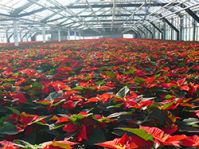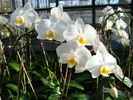Usage
Peat moss biomass characteristics include a low pH, low nutrient content, very good rewettability, high storage capacity for water and air, a low weight per unit of volume, low nitrogen mobilisation as well as antibacterial and antifungal properties. Sphagnum biomass has numerous potential applications, and further uses are still being investigated.
Replacement of Peat Moss in Horticultural Growing Media

In several research projects focusing on Sphagnum cultivation, the use of Sphagnum biomass in growing media was successfully tested for many applications in commercial horticulture including: cultivation of ornamental plants and vegetables, seed germination, raising seedlings and propagation of stem cuttings.
Exotic Ornamental Plants

These include orchids, bromeliaceae, bonsai and ericaceous shrubs
So far the peat moss available in the market originates from the Southern hemisphere (e.g. New Zealand, Chile) and has been harvested manually in natural habitats. Prior to sale the material is dried and radiated. The Sphagnum biomass is used for the cultivation of epiphytic orchids and for the propagation of orchid seedlings as well as propagation and covering material for bonsai.
Garden Design & Floristry
Dried Sphagnum biomass can be utilised in hanging baskets or as a growing medium for vertical living walls. Living green Sphagna are used as ornamental moss (“floral moss”), for green sculptures, and as an ingredient in turf roofs.
Terrariums
In this application, the water holding capacity of Sphagnum is utilized to maintain a high air humidity within the terrarium. The Sphagna also serve as bedding for egg clutches, moist hiding places, and for hibernation and transport of amphibians, reptiles and spiders.
Sphagnum Propagules
Apart from propagules for a commercial cultivation of Sphagna, the artificial establishment of Sphagna could present a potential use in the restoration of degraded peatlands.
Further Applications
- material for bandages and sanitary items with high absorption properties (e.g. Absorbec™ from Johnson & Johnson)
- traditional insulating material in buildings such as log cabins
- material for decontamination of pollutants (oil, chemicals)
- material for transport and packaging of living animals and delicate goods (e.g. flowers, fish)
- water filtering
- pharmaceuticals
- cosmetics
- degradable flower pots
- litter










